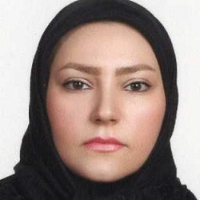Analyzing the Reasons of the Migration of Academic Elites from the Perspective of the Functions of Higher Education in Iran: Using a Systematic Review (2002-2022)
Considering the increasing trend of the migration of academic elites and the failure of many of them to return to the country in recent years, the aim of the present study is to identify the factors affecting the migration of academic elites from the perspective of the functions of the higher education system in Iran.
The research, in terms of purpose, is applied, and in terms of data collection, is qualitative, using documentary study and systematic review methods. Accordingly, scientific-research articles published in Iran (2002-2022) in domestic scientific-research databases including Noormags, Magiran, and the Humanities Database were reviewed. Then, based on criteria such as the relevance of the articles to the main research topic, the focus of the research on academic elites, attention to the components related to the functions of higher education as a factor affecting the migration of academic elites, being scientific-research articles, and a specific time frame, 34 articles were selected from among 944 studies through examining the title, abstract, and content, and fanally were analyzed. The credibility of the qualitative findings was confirmed using the method of triangulation, as well az the principles of Lincoln and Guba and Creswell's strategies.The results of the systematic review led to the identification of two categorical clusters of "internal push factors" and "external pull factors" including 11 components and 34 concepts.
Regarding the main research question of identifying the factors affecting the migration of academic elites in Iran from the perspective of the functions of higher education and reviewing the research conducted in the past twenty years (2002-2022), a total of 11 components were identified, including 6 components in the category of push factors (insufficient quality of educational functions; insufficient quality of the research ecosystem; inadequate efficiency of the innovation system; inadequate efficiency of the research ecosystem; inadequate efficiency of the innovation system; inadequate efficiency of the education governance system; problems and obstacles in attracting and retaining academic elites; inappropriate academic culture and climate) and 5 components in the category of pull factors (desirable quality of the education system; desirable quality of research; the existence of a suitable academic culture and climate; an efficient system of retaining and career development of faculty members; and the dynamic relationship between the university and society). Based on this, although the reasons given for the movements and displacements of elites are highly diverse and numerous, alongside economic, political, and social factors, one of the most important push factors leading to the migration of academic elites in developing countries, including Iran, is access to high-quality higher education from various dimensions. Consequently, in order to address the phenomenon of academic elite migration in Iran as an inevitable phenomenon and a global trend, policymakers and authorities, particularly in the field of higher education, should focus on strategies to better utilize the capacity of elites outside the country in the form of elite circulation, in addition to efforts to address and reduce internal pressure factors and improve the quality level of higher education within the country to retain and preserve elites, as well as efforts to facilitate the return of migrants.
-
Presentation of a Strategic Management Model for Industrial Cooperatives in the Country with a Future-Oriented Perspective
Mostafa Foroutan, Mohamadmahdi Zolfagharzadeh Kermani *, Mohammadali Afshar Kazemi
Business, Marketing, and Finance Open, Mar-Apr 2025 -
Governance of Energy Consumption Behavior in Iran with Emphasis on Factors Affecting Consumption Culture (Case Study: Golestan Province)
Maryam Keyghobadi, Mohammadmahdi Zolfaghar Zadeh *, Elahe Sadat Akbarnia, Omid Shahhoseini
Governance and Development Journal, -
Identifying the Dimensions and Components of Teachers' Digital Competence: A Systematic Review
Shiva Salehi, Marzieh Dehghani *, Esmail Azimi Yancheshmeh, Mohammad Javadipour, Keyvan Salehi,
Journal of Curriculum Studies, -
Identifying the components of academic authentic leadership
Mehdi Amani, Mohammad Mirkamali, Javad Poorkarimi *, Mahmood Abolghasemi, Marziyeh Aali
Journal of Educational Leadership Research, -
Identifying E-Learning Challenges in Higher Education
*, Mohammadreza Keramati, Parisa Mehmandost, Samaneh Hejazi
Journal of Academic Management, Spring 2024 -
Presenting the Conceptual Model of Innovative University Based on the Meta-Synthesis Method (With Emphasis on Distinction of Entrepreneurship and Innovation)
*, Maghsoud Farasatkhah,
Qurterly Journal of Research and Planing in Higher Education, -
The relationship between the Locus of control and social responsibility with the mediation of professional ethics among elementary school teachers in Shahr-e-Rey
Zahra Ghamooshi, *, Zahra Ehtesham
Journal of Pouyesh in Education and Consultation, -
E Designing a conceptual model of factors affecting the quality of university virtual education and evaluate its quality during the COVID.19 pandemic
Masoomeh Chamasemani, Zahra Ehtesham *
Encyclopedia of Digital Transformation,



